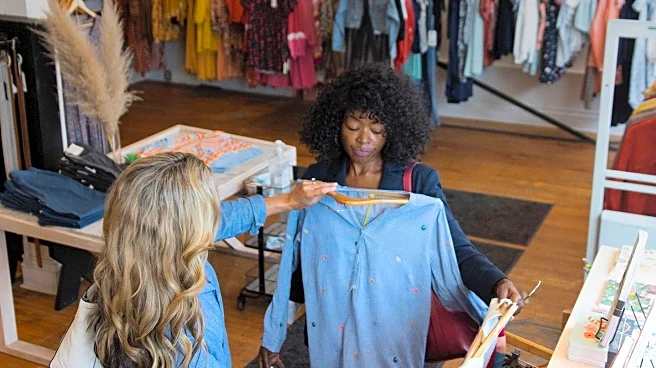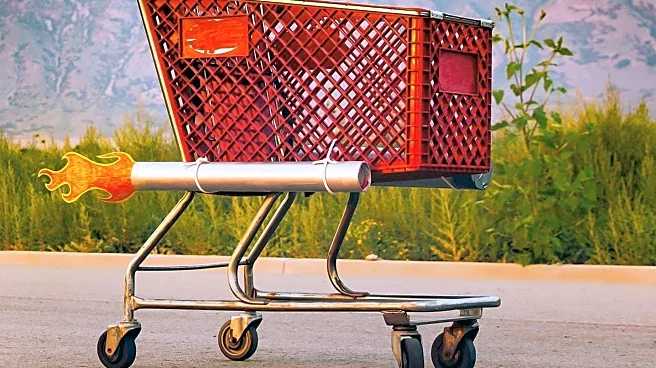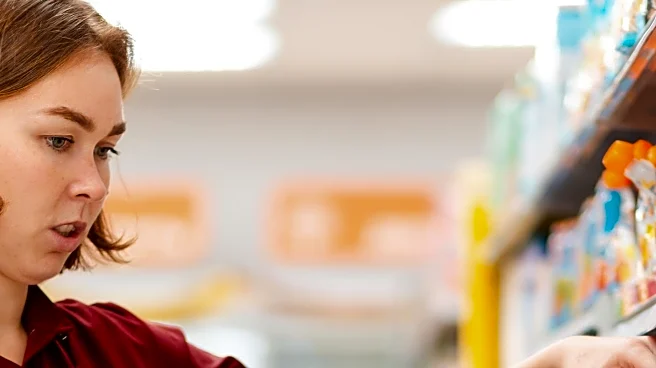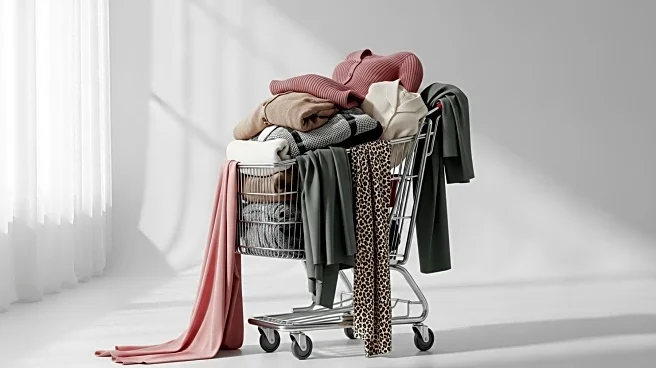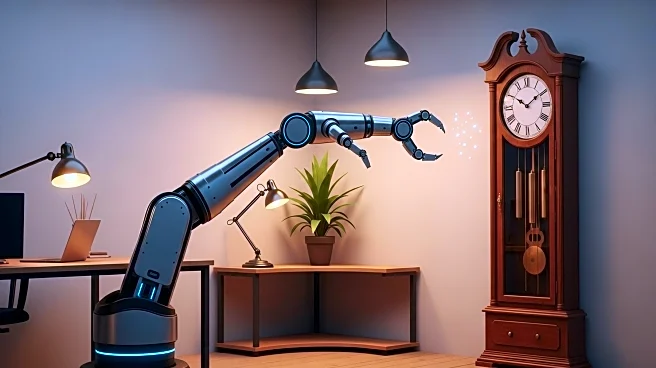What is the story about?
What's Happening?
A Reddit user, known as u/p--py, who frequently shares his thrift store finds, recently experienced 'retail price shock' when tasked with purchasing a baby item from a regular store. Expecting to pay around $15 for a simple baby bouncer, he was surprised to find the cheapest option priced at $34.99 at Walmart. Opting instead to thrift, he found a similar item for $2.99 the next day. This incident sparked a discussion among fellow thrifters on Reddit, many of whom shared similar experiences of being shocked by retail prices after becoming accustomed to thrift store bargains. The conversation highlighted the growing trend of thrifting, with many users expressing a preference for secondhand shopping as their primary choice rather than a backup option.
Why It's Important?
The incident underscores the increasing popularity and economic significance of thrifting in the U.S. As retail prices continue to rise, more consumers are turning to thrift stores and online platforms like Depop for affordable alternatives. This shift not only impacts consumer spending habits but also contributes to the growth of the secondhand market, which is projected to reach $367 billion globally by 2029. The trend reflects a broader societal move towards sustainable consumption and the value placed on unique, vintage items. Retailers may need to adapt to this changing landscape by reconsidering pricing strategies and exploring ways to integrate secondhand offerings into their business models.
What's Next?
As the secondhand market continues to expand, traditional retailers may face increased pressure to compete with thrift stores and online resale platforms. This could lead to more collaborations between retail brands and secondhand platforms, or the introduction of dedicated sections for pre-owned goods within mainstream stores. Additionally, the growing interest in thrifting may drive further innovation in the resale industry, with advancements in technology facilitating easier access to secondhand items and enhancing the overall shopping experience for consumers.
Beyond the Headlines
The thrifting trend also raises ethical and cultural questions about consumerism and sustainability. As more people embrace secondhand shopping, it challenges the traditional notion of 'new is better' and promotes a more environmentally friendly approach to consumption. This shift could lead to a cultural reevaluation of value and quality, where the history and uniqueness of an item are prized over its newness. Furthermore, the trend may encourage greater transparency in the fashion industry regarding production practices and the environmental impact of fast fashion.
AI Generated Content
Do you find this article useful?
